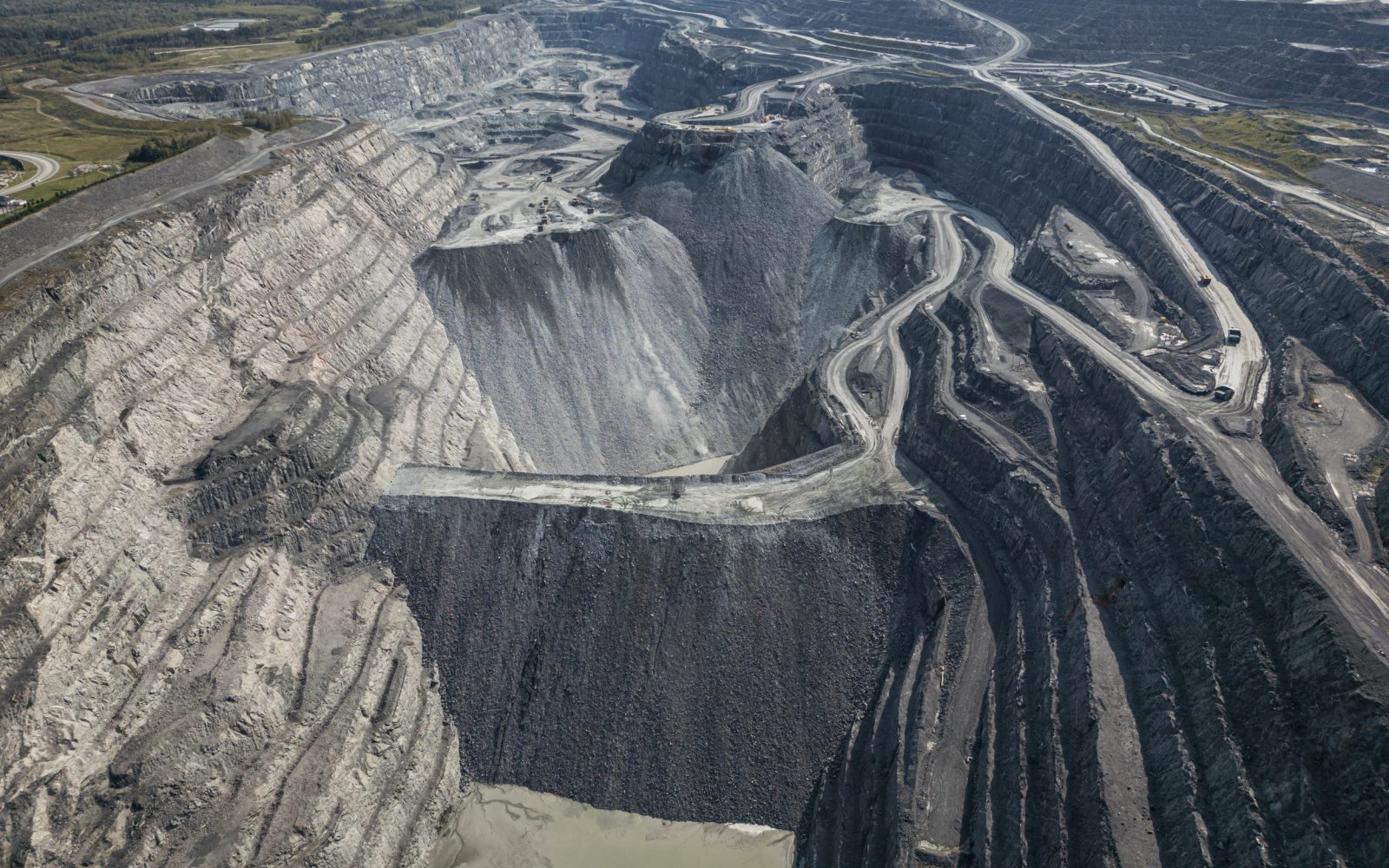
Located in Malartic in northwestern Quebec, the Canadian Malartic mine (MCM) is one of the largest open-pit gold mines in Canada. It consists of the Barnat pit, which has been in operation since 2019 and will continue operating until 2029, and the Canadian Malartic pit, which was in operation from 2011 until May 2023.
When we were planning the mine’s life, we anticipated that the tailings facility would reach full capacity by 2024, shortly after the end of gold operations in the Canadian Malartic pit. When mining operations in the Canadian Malartic pit ended, the pit was 1.8 km long, 1 km wide, and 360 metres deep. Considering the size of the pit, the plan to use it as a tailings disposal area was ideal.
This innovative new practice gives the pit a second life and minimizes environmental impacts associated with expanding the tailings facility and encroaching on forest and wetlands. This is the first time a pit in a mine will be used to deposit both waste rock and tailings that are separated by a central berm.
Based on current forecasts, the pit will store 168 million tonnes (Mt) of waste rock and 108 Mt of tailings from both the Canadian Malartic mine and the Odyssey mine. Disposal in the Canadian Malartic pit is expected to last until 2042.
Christian Roy, General Manager of the Canadian Malartic Mine, is particularly proud of this achievement: ‟A project of this scope cannot be achieved without the commitment and expertise of our people and our various teams. Collaboration has been the key to success in planning, developing and executing this project.”
The environment is at the heart of our concerns
Before deciding to convert the Canadian Malartic pit into a waste rock and tailings accumulation area, we considered and analyzed several other options. We presented our final decision to the Bureau d’audiences publiques sur l’environnement (BAPE) in 2016 and received its approval.
Nathalie Tremblay, Director of Environment at the Canadian Malartic mine, explains that ‟compared with conventional above-ground storage areas, this scenario comes with many environmental advantages. The main benefit is the reduction in size of surface storage areas, thus limiting encroachment on the environment. In the longer term, it also helps restore the site.”
Other environmental benefits include:
• Improved control of the risks for impacts on surface and groundwater quality;
• Reduced distance over which waste rock is transported during operations, thereby reducing greenhouse gas emissions, noise and dust;
• Minimized risks associated with surface dam failures;
• Significantly reduced need for borrow materials that would be required for the development and restoration of surface storage areas.
Development and operation
In 2023, we undertook several developments and a testing phase to use this pit as a disposal area for waste rock and tailings.
A central berm was erected using waste rock, which separates the pit into two. Waste rock and slurry tailings are respectively deposited on either side. The central berm is also used to drain water from the tailings to the dewatering drift, located on the bottom left.
The water is then pumped to the surface and transported to the treatment plant to be reused in our operations.
Tailings will be deposited to the right side of the berm and waste rock will be deposited on the left. Once the water is drained from the tailings, a sort of sand will be left at the bottom of the pit.
Over time, the pit will fill up and once tailings accumulation ends, it will be naturally flooded by the watershed.

Sectional view from the south. The water contained in the tailings will drain to the east side of the pit and be pumped out to be reused at the ore processing plant.
Inform the community
We have implemented various communication initiatives related to the new purpose of the pit to ensure harmonious cohabitation and to maintain a relationship of trust with the residents of Malartic.
We published information in our newsletter and organized a coffee-and-chat at the Community Relations Office.
Our Communications and Community Relations Teams produced four videos to provide people with a clear understanding of the history of the Canadian Malartic mine and pit, from its origins to when it became a disposal area. The videos can only be accessed from the Belvédère observatory in the town of Malartic, which directly overlooks the Canadian Malartic pit. These videos provide citizens and tourists with complete and detailed information about what they’re seeing.

The Canadian Malartic pit disposal project is a testament to our teams’ expertise and Agnico Eagle’s environmental leadership.
Using the Canadian Malartic pit for waste rock and tailings disposal helps us mitigate the impacts of our operations on the environment and maintain its viability and diversity.